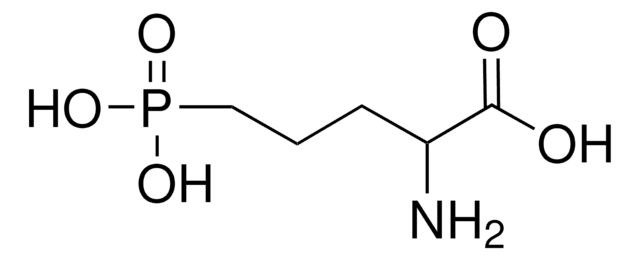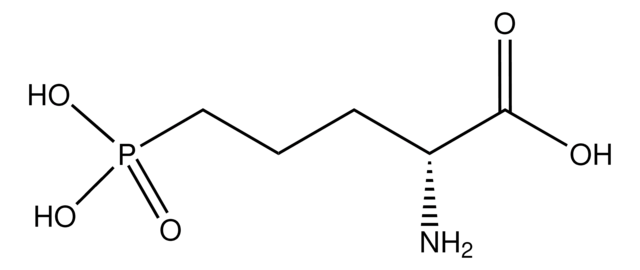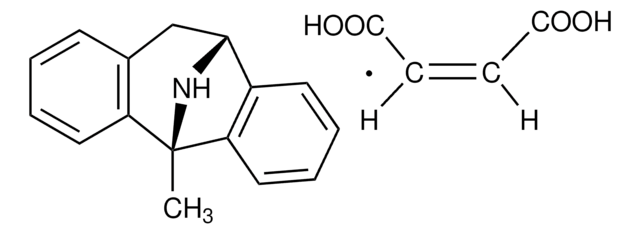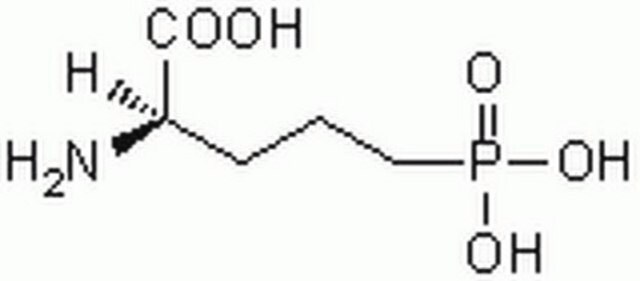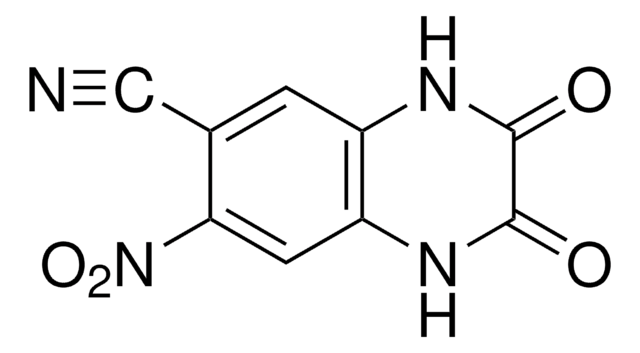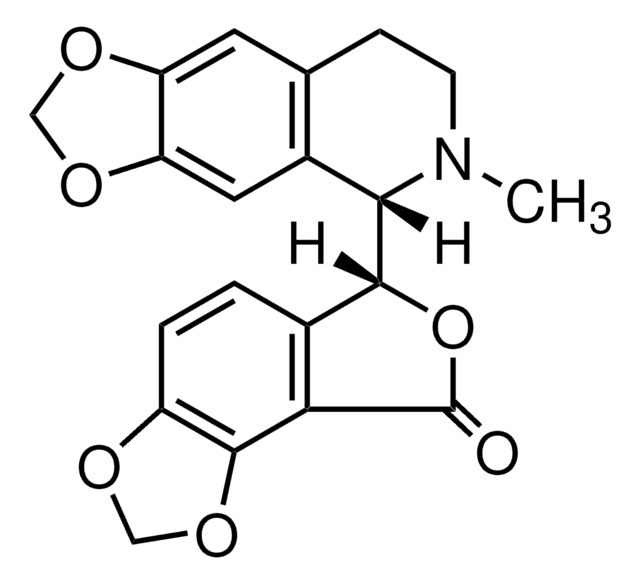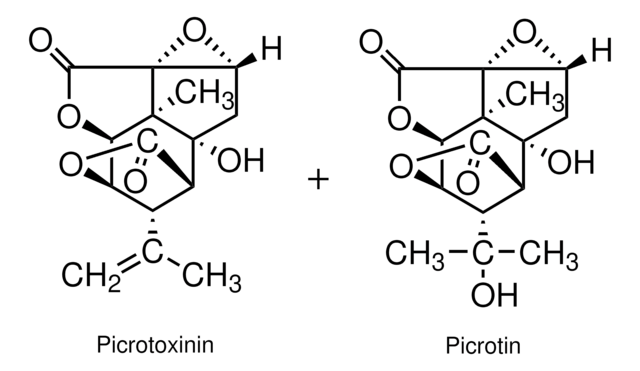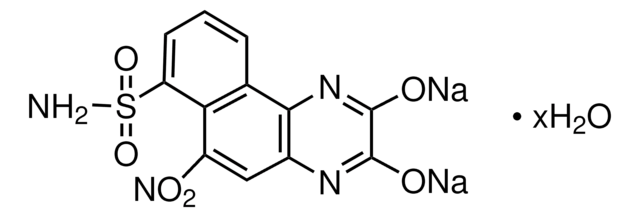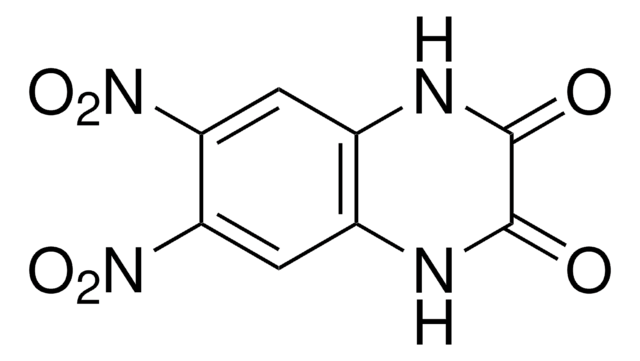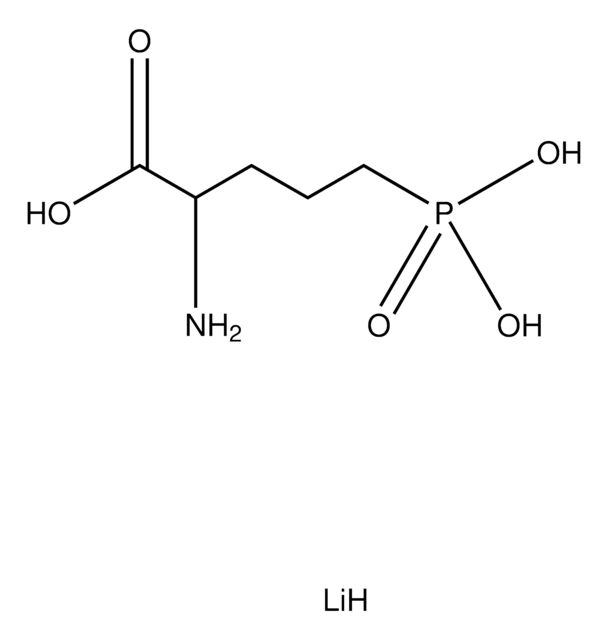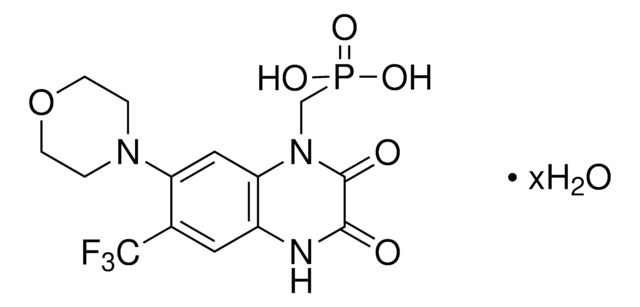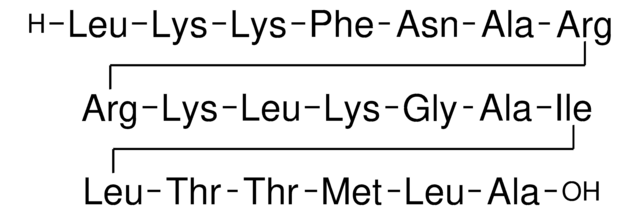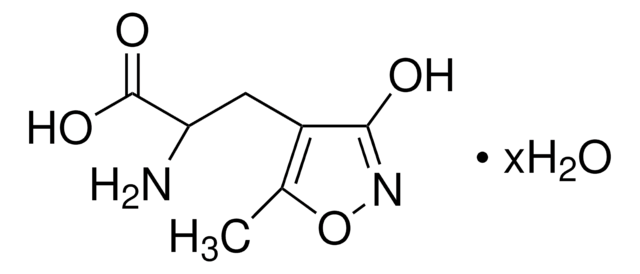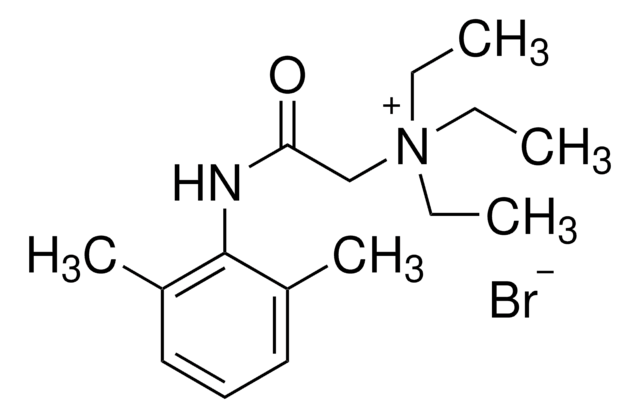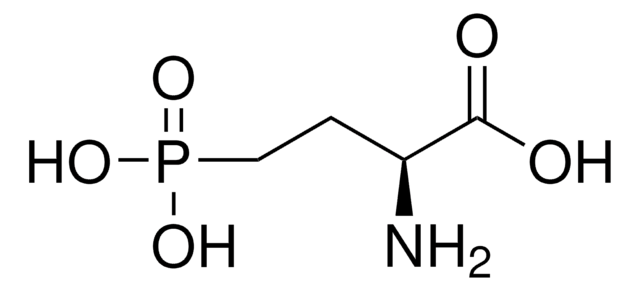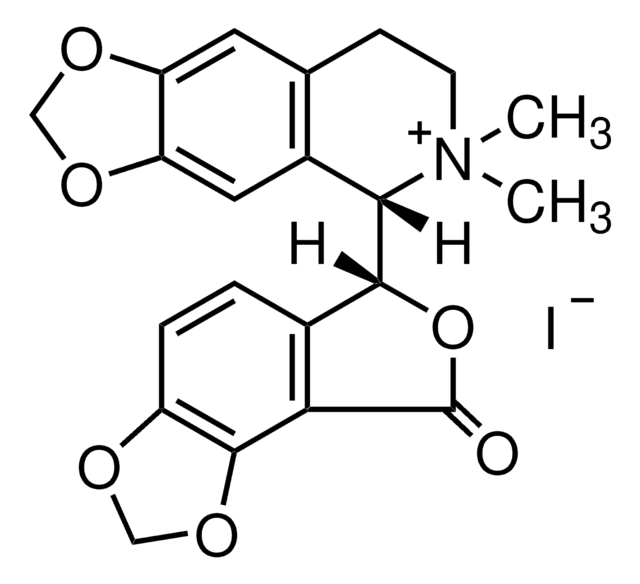Kluczowe dokumenty
C239
CNQX disodium salt hydrate
≥98% (HPLC), solid, AMPA/kainate receptor antagonist.
Synonim(y):
6-Cyano-7-nitroquinoxaline-2,3-dione disodium salt hydrate
About This Item
Polecane produkty
Nazwa produktu
CNQX disodium salt hydrate, ≥98% (HPLC), solid
Poziom jakości
Próba
≥98% (HPLC)
Formularz
solid
warunki przechowywania
protect from light
kolor
orange to red
rozpuszczalność
H2O: >2 mg/mL (warmed)
ciąg SMILES
O.[Na+].[Na+].[O-]c1nc2cc(C#N)c(cc2nc1[O-])[N+]([O-])=O
InChI
1S/C9H4N4O4.2Na.H2O/c10-3-4-1-5-6(2-7(4)13(16)17)12-9(15)8(14)11-5;;;/h1-2H,(H,11,14)(H,12,15);;;1H2/q;2*+1;/p-2
Klucz InChI
LCDWHGXMFAZHEO-UHFFFAOYSA-L
informacje o genach
human ... ADORA1(134) , ADORA2A(135) , ADORA2B(136) , ADORA3(140) , GRIA1(2890) , GRIA2(2891) , GRIA3(2892) , GRIA4(2893)
Zastosowanie
- as a competitive non-NMDA receptor antagonist and competitive AMPA/kainate receptor antagonist in neuronal cultures(110)
- as a glutamatergic blockers for measuring inhibitory postsynaptic currents in projection neurons(111)
- as a AMPA glutamate receptor antagonist prefrontal cortex neurons(112)
Działania biochem./fizjol.
Cechy i korzyści
Kod klasy składowania
11 - Combustible Solids
Klasa zagrożenia wodnego (WGK)
WGK 3
Temperatura zapłonu (°F)
Not applicable
Temperatura zapłonu (°C)
Not applicable
Środki ochrony indywidualnej
Eyeshields, Gloves, type N95 (US)
Wybierz jedną z najnowszych wersji:
Masz już ten produkt?
Dokumenty związane z niedawno zakupionymi produktami zostały zamieszczone w Bibliotece dokumentów.
Klienci oglądali również te produkty
Nasz zespół naukowców ma doświadczenie we wszystkich obszarach badań, w tym w naukach przyrodniczych, materiałoznawstwie, syntezie chemicznej, chromatografii, analityce i wielu innych dziedzinach.
Skontaktuj się z zespołem ds. pomocy technicznej